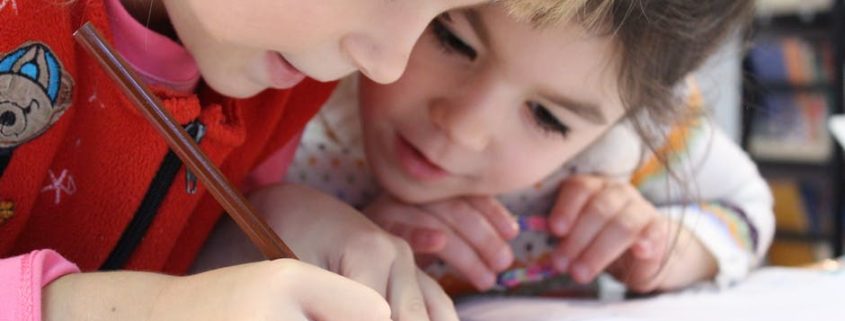A Guide to Social Learning Theory
There are some Instagram influencers who charge up to $1,000 per sponsored Instagram story.
Imagine being able to charge that much money to make 1 Instagram story. This is a small example of the power of the Social Learning Theory at work.
Humans are constantly watching, learning from, and even mimicking the people around them. Whether we’re watching our parents or a stranger on the internet (such as an influencer), many of us start to become mosaics of the people we watch most.
There’s much more to the Social Learning Theory in this quick guide. We’ll explain the theory and how it applies to different therapy approaches below.
What Is Social Learning Theory?
This theory states that humans develop social behavior by learning and copying the social influences around them- just as a child watches their parent. If you’ve studied psychology, social work, law, or criminology, there’s a good chance you’ve heard of it.
You may have even heard about Social Cognitive Theory- an advanced theory developed by Albert Bandura. This theory emphasizes how humans create and maintain behaviors.
Using the Social Cognitive Theory in education and public health is common. Many public health officials have stated that not only understanding the creation of a specific action is important, but it’s also crucial to understand the maintenance of an action.
The 4 Main Processes of the Social Learning Theory
To better understand the Social Learning Theory (SLT), take a look at the 4 main processes of the theory.
1. Attention
We learn the actions we pay attention to. It would be too overwhelming to study and mimics every action around us on a daily basis.
If you’re a parent, you’ve seen the harsh reality of this process. There may have been times in which you slammed a door while angry and thought your child wasn’t paying attention. But then you notice your child slamming a door the next time they’re upset.
Looks like someone was paying attention!
2. Retention
The retention of an action is the ability we have to remember an action. Retention rates increase the more times an action is repeated.
For us to learn how to behave a certain way, we must notice the repetition of a behavior around us. It’s much like a young student trying to ‘fit in’ with the cool kids. They start to remember the consistent behavioral patterns of the people they want to be.
3. Reproduction
Because we’ve seen someone change a tire several times, doesn’t mean we’re automatically able to change a tire. Reproduction speaks on the ability to reproduce a behavior.
Our physical bodies and environments sometimes limit the behaviors we retain from others. We can’t always reproduce what we see.
4. Motivation
Motivation is the willpower someone has to repeat a behavior. It’s typically determined by an individual analyzing the consequences of a behavior.
The more the outcome outweighs the cost of a behavior, the more motivated we are to repeat it.
SLT and Psychotherapy
Psychotherapy is what most people picture as someone laying on a soft velvet couch, telling a therapist how they feel. It’s your typical ‘talk therapy’.
Those practicing psychotherapy use a variety of tools and techniques to help patients recover from or cope with mental illnesses and trauma. Psychotherapists work with a client to reduce negative behavioral issues to promote healing and peace.
People struggling with addiction, insomnia, childhood trauma, anxiety, and grief often turn to a psychotherapist for help.
How is SLT Applied to Psychotherapy?
As stated above, humans can learn new behavior patterns by watching someone else perform them. Therapists use a controlled environment to teach clients new behavioral and thought patterns.
Have you ever heard a therapist saying something like, “The next time something like that happens, try this…”? Have you ever heard of roleplaying?
Many psychotherapists provide examples of better behaviors that clients can practice, giving them more favorable results. Clients can increase retention of these behaviors by roleplaying scenarios with their therapists.
Unfortunately, due to past coping mechanisms and trauma, re-learning behaviors is difficult for many clients. That’s why it’s important to consistently see your therapist.
What is Cognitive Behavioral Therapy (CBT)?
CBT is a popular form of therapy used by many practicing clinicians. Its aim is to change thinking patterns, then change behavioral patterns.
This approach has been effective for many people who suffer from addiction, self-esteem issues, trauma, PTSD, and eating disorders.
Cognitive Behavioral Therapy brings to our attention the effect that unhelpful thought and behavior patterns have on our life and mental health. Reprogramming our minds to think and act in a different way is difficult, but can be done with perseverance and the help of a trained therapist.
Not only may a therapist offer new ways of thinking and acting, but they also build your motivation to perform healthy behaviors by building the confidence you have in your abilities.
A large chunk of the battle is believing in ourselves enough to carry out healthy behaviors.
Watching and Learning: Social Learning Theory
As a child, we learned how to navigate the world by watching our parents. This is the Social Learning Theory at work.
SLT states humans learn and perform behaviors by watching others. We can restructure our behavioral patterns through types of psychotherapy, such as CBT. Learning healthier behaviors than what we’ve been taught is difficult, but possible.
For those struggling with depression, anxiety, trauma, and other mental illness-related issues, Solara Mental Health can help. We’re located in the San Diego area and offer many helpful programs. Contact us today to get the help you need.






